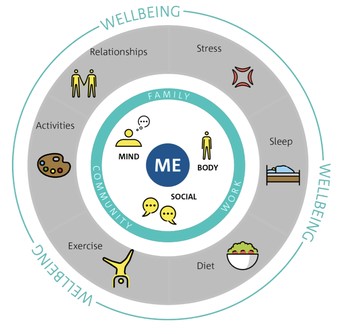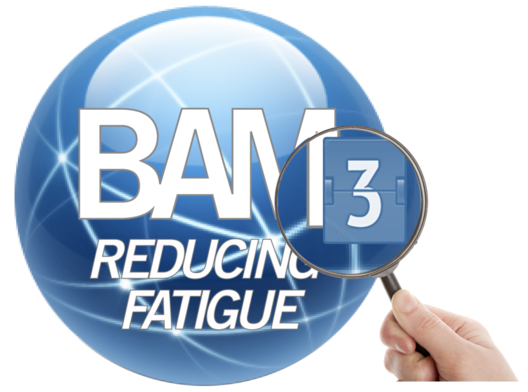
FRM News Flash – May 2020
Webinar: Crew Management During the COVID-19 Crisis

Over 200 crew management professionals world-wide attended the Jeppesen webinar last month called ‘Crew Management Support During the COVID-19 Crisis’.
The webinar explained in more detail how to deal with crew teaming in both the pairing and the rostering process. It is increasingly important to look at how to avoid over-exposing crew to contact with too many other crew, in order to reduce the risk of spreading infections.  By keeping crew together in teams, the risk of many crew being quarantined if one person is found to be infected, is also greatly reduced.
By keeping crew together in teams, the risk of many crew being quarantined if one person is found to be infected, is also greatly reduced.
The webinar covered a number of alternative strategies to accomplish both ‘full’ teaming as well as promoting a large amount of teaming, without enforcing it strictly. It also covered controlling the ‘cost’ of acheiving teaming, in terms of impact on other planning KPIs. Also covered were methods for quick and frequent re-planning of crew using optimizers.
Please contact your Jeppesen representative or service manager if you missed out on this great seminar, and we can provide a summary or a recording.
Great Material for Crew Wellbeing
The Flight Safety Foundation just recently published  ‘An Aviation Professional’s Guide to Wellbeing’. The document describes the idea of wellbeing and offers some simple tools based on some fundamental psychological concepts. These concepts will help each one of us to make decisions and take actions that will maintain or improve our state of wellbeing.
‘An Aviation Professional’s Guide to Wellbeing’. The document describes the idea of wellbeing and offers some simple tools based on some fundamental psychological concepts. These concepts will help each one of us to make decisions and take actions that will maintain or improve our state of wellbeing.
Please find the guide via this link.
 Another good document on this topic is ‘Turbulent Times’ by Cullen, Cahill and Gaynore. This team has put together a booklet, based on the initial findings of a recent pilot wellbeing survey, with data collected from almost 1,100 pilots. The booklet covers the topics of sleep, exercise, diet, social connections, stress management and coping techniques. It provides very practical advice and guidance, and you can find it here.
Another good document on this topic is ‘Turbulent Times’ by Cullen, Cahill and Gaynore. This team has put together a booklet, based on the initial findings of a recent pilot wellbeing survey, with data collected from almost 1,100 pilots. The booklet covers the topics of sleep, exercise, diet, social connections, stress management and coping techniques. It provides very practical advice and guidance, and you can find it here.
Fatigue Model Performance Simplified
Fatigue models need to be extremely fast if they are to be used proactively in the aviation crew management process. We asked Arvid Müllern-Aspegren, Scheduling Safety Specialist at Jeppesen in Gothenburg, to explain this in more detail to us but in layman terms, and this is his reply:
– During pairing and roster optimization, it could be that a fatigue model is asked, well over a thousand times per second, to evaluate fatigue risk over a sequence of activities covering up to some 40 days of work at a time for each crew. These crew planning optimizers, running in parallel on many CPU cores on powerful servers, are used by all larger operators when putting together the crew plan for the upcoming weeks of flying. If a fatigue model cannot cope with responding at roughly the same pace, the overall crew planning process would be significantly prolonged. And since this process is almost always on the critical path, that would mean that airlines would need to resort to only affecting the results with traditional rules instead of a direct influence by the science in real-time. This in turn leads to falling back to performing the detailed assessment on an already produced plan, after-the-fact. This allows for only modifying just a few worst cases – thus losing out on the opportunity of making any major impact to the overall risk. This is why fatigue model performance is key.
A good explanation indeed, and in somewhat simple terms – thank you Arvid. Please find more details on this topic in a PDF found here, called ”The Secret Behind Proactive Risk Reduction“.
Comparing Different Fatigue Models
 Reading this Jeppesen newsletter, one may get the impression that there’s just one bio-mathematical fatigue model available; the Boeing Alertness Model. However, there are several different models to choose from, for an airline operator to use within their fatigue risk management system, all with their own pros and cons. A good starting point is a document comparing the available models, the ”Biomathematical Fatigue Models – Guidance Document”, by CASA, published back in 2014. Please find it via this link.
Reading this Jeppesen newsletter, one may get the impression that there’s just one bio-mathematical fatigue model available; the Boeing Alertness Model. However, there are several different models to choose from, for an airline operator to use within their fatigue risk management system, all with their own pros and cons. A good starting point is a document comparing the available models, the ”Biomathematical Fatigue Models – Guidance Document”, by CASA, published back in 2014. Please find it via this link.
In addition, you may find this comparison matrix from Jeppesen also helpful when placing several models side by side, comparing how they stack up against each other in terms of model capabilities.
A Sneak Peek at the Development of BAM 3 (Part 2)

BAM version 3 is in the final stages of testing. We have asked David Karlsson, Senior Mathematical Fatigue Risk Modelling Specialist, a few more questions about the development of BAM 3. (See previous news flash for Part 1).
David, picking up from what you told us previously, can you please elaborate on what you meant by acclimatisation in BAM 3 being influenced by light conditions?
– The main mechanism behind acclimatisation to a new time zone is light exposure on the retina. That light exposure supresses the melatonin secretion from the pineal gland, which will, depending on the timing either delay or advance our biological clock – the circadian rhythm. We are the most sensitive to such light exposure in the late evening and the early morning. Bio-mathematical models have until now relied on the geographical/political time zone of a location as a rough proxy for that light exposure, and used the difference between the time zone and the predicted body clock time to adjust the circadian rhythm in the model.
And BAM 3 will use light exposure instead?
– Well… the real light exposure, when predicting into the future, will of course be overly complex to estimate – especially during runtime while guiding a crew optimizer. To put it in simple terms, you could say that instead of relying solely on time zone as a proxy for the light exposure, BAM 3 relies more heavily on predicted wakefulness as the proxy. After all, crew that are awake will have some light exposure to the retina, whereas crew that sleep will not. And then we of course use the overlap of wakefulness periods with the sensitivity periods in late evening and early morning, and let that feed in to the adjustment of the circadian rhythm.
This sounds quite complex, what are the benefits?
– The main benefit is that the model becomes better at predicting both sleeping patterns and alertness levels in larger time zone transition patterns when crew are away for longer times. Another benefit is that an adjustment of the circadian rhythm can occur even if crew are operating locally without any time zone transitions. With this modelling, we can better capture adaptation to consecutive early and late shifts, but also better reflect the problems crew experience when transitioning between early and late shift patterns.
Thank you David. Anything more to add? Perhaps give us a date for the general availability of BAM 3?
– I can add that our work is progressing well and that we will have a webinar providing current Jeppesen FRM customers with more information on June 4. Please contact your Jeppesen representative if you like to attend and have not yet received an invite.
jeppesen.com/frm
+46 31 720 81 00
Send us an Email
Webinar: Crew Management During the COVID-19 Crisis

Over 200 crew management professionals world-wide attended the Jeppesen webinar last month called ‘Crew Management Support During the COVID-19 Crisis’.
The webinar explained in more detail how to deal with crew teaming in both the pairing and the rostering process. It is increasingly important to look at how to avoid over-exposing crew to contact with too many other crew, in order to reduce the risk of spreading infections.  By keeping crew together in teams, the risk of many crew being quarantined if one person is found to be infected, is also greatly reduced.
By keeping crew together in teams, the risk of many crew being quarantined if one person is found to be infected, is also greatly reduced.
The webinar covered a number of alternative strategies to accomplish both ‘full’ teaming as well as promoting a large amount of teaming, without enforcing it strictly. It also covered controlling the ‘cost’ of acheiving teaming, in terms of impact on other planning KPIs. Also covered were methods for quick and frequent re-planning of crew using optimizers.
Please contact your Jeppesen representative or service manager if you missed out on this great seminar, and we can provide a summary or a recording.
Great Material for Crew Wellbeing
The Flight Safety Foundation just recently published  ‘An Aviation Professional’s Guide to Wellbeing’. The document describes the idea of wellbeing and offers some simple tools based on some fundamental psychological concepts. These concepts will help each one of us to make decisions and take actions that will maintain or improve our state of wellbeing.
‘An Aviation Professional’s Guide to Wellbeing’. The document describes the idea of wellbeing and offers some simple tools based on some fundamental psychological concepts. These concepts will help each one of us to make decisions and take actions that will maintain or improve our state of wellbeing.
Please find the guide via this link.
 Another good document on this topic is ‘Turbulent Times’ by Cullen, Cahill and Gaynore. This team has put together a booklet, based on the initial findings of a recent pilot wellbeing survey, with data collected from almost 1,100 pilots. The booklet covers the topics of sleep, exercise, diet, social connections, stress management and coping techniques. It provides very practical advice and guidance, and you can find it here.
Another good document on this topic is ‘Turbulent Times’ by Cullen, Cahill and Gaynore. This team has put together a booklet, based on the initial findings of a recent pilot wellbeing survey, with data collected from almost 1,100 pilots. The booklet covers the topics of sleep, exercise, diet, social connections, stress management and coping techniques. It provides very practical advice and guidance, and you can find it here.
Fatigue Model Performance Simplified
Fatigue models need to be extremely fast if they are to be used proactively in the aviation crew management process. We asked Arvid Müllern-Aspegren, Scheduling Safety Specialist at Jeppesen in Gothenburg, to explain this in more detail to us but in layman terms, and this is his reply:
– During pairing and roster optimization, it could be that a fatigue model is asked, well over a thousand times per second, to evaluate fatigue risk over a sequence of activities covering up to some 40 days of work at a time for each crew. These crew planning optimizers, running in parallel on many CPU cores on powerful servers, are used by all larger operators when putting together the crew plan for the upcoming weeks of flying. If a fatigue model cannot cope with responding at roughly the same pace, the overall crew planning process would be significantly prolonged. And since this process is almost always on the critical path, that would mean that airlines would need to resort to only affecting the results with traditional rules instead of a direct influence by the science in real-time. This in turn leads to falling back to performing the detailed assessment on an already produced plan, after-the-fact. This allows for only modifying just a few worst cases – thus losing out on the opportunity of making any major impact to the overall risk. This is why fatigue model performance is key.
A good explanation indeed, and in somewhat simple terms – thank you Arvid. Please find more details on this topic in a PDF found here, called ”The Secret Behind Proactive Risk Reduction“.
Comparing Different Fatigue Models
 Reading this Jeppesen newsletter, one may get the impression that there’s just one bio-mathematical fatigue model available; the Boeing Alertness Model. However, there are several different models to choose from, for an airline operator to use within their fatigue risk management system, all with their own pros and cons. A good starting point is a document comparing the available models, the ”Biomathematical Fatigue Models – Guidance Document”, by CASA, published back in 2014. Please find it via this link.
Reading this Jeppesen newsletter, one may get the impression that there’s just one bio-mathematical fatigue model available; the Boeing Alertness Model. However, there are several different models to choose from, for an airline operator to use within their fatigue risk management system, all with their own pros and cons. A good starting point is a document comparing the available models, the ”Biomathematical Fatigue Models – Guidance Document”, by CASA, published back in 2014. Please find it via this link.
In addition, you may find this comparison matrix from Jeppesen also helpful when placing several models side by side, comparing how they stack up against each other in terms of model capabilities.
A Sneak Peek at the Development of BAM 3 (Part 2)

BAM version 3 is in the final stages of testing. We have asked David Karlsson, Senior Mathematical Fatigue Risk Modelling Specialist, a few more questions about the development of BAM 3. (See previous news flash for Part 1).
David, picking up from what you told us previously, can you please elaborate on what you meant by acclimatisation in BAM 3 being influenced by light conditions?
– The main mechanism behind acclimatisation to a new time zone is light exposure on the retina. That light exposure supresses the melatonin secretion from the pineal gland, which will, depending on the timing either delay or advance our biological clock – the circadian rhythm. We are the most sensitive to such light exposure in the late evening and the early morning. Bio-mathematical models have until now relied on the geographical/political time zone of a location as a rough proxy for that light exposure, and used the difference between the time zone and the predicted body clock time to adjust the circadian rhythm in the model.
And BAM 3 will use light exposure instead?
– Well… the real light exposure, when predicting into the future, will of course be overly complex to estimate – especially during runtime while guiding a crew optimizer. To put it in simple terms, you could say that instead of relying solely on time zone as a proxy for the light exposure, BAM 3 relies more heavily on predicted wakefulness as the proxy. After all, crew that are awake will have some light exposure to the retina, whereas crew that sleep will not. And then we of course use the overlap of wakefulness periods with the sensitivity periods in late evening and early morning, and let that feed in to the adjustment of the circadian rhythm.
This sounds quite complex, what are the benefits?
– The main benefit is that the model becomes better at predicting both sleeping patterns and alertness levels in larger time zone transition patterns when crew are away for longer times. Another benefit is that an adjustment of the circadian rhythm can occur even if crew are operating locally without any time zone transitions. With this modelling, we can better capture adaptation to consecutive early and late shifts, but also better reflect the problems crew experience when transitioning between early and late shift patterns.
Thank you David. Anything more to add? Perhaps give us a date for the general availability of BAM 3?
– I can add that our work is progressing well and that we will have a webinar providing current Jeppesen FRM customers with more information on June 4. Please contact your Jeppesen representative if you like to attend and have not yet received an invite.
| jeppesen.com/frm | +46 31 720 81 00 | Send us an Email |
